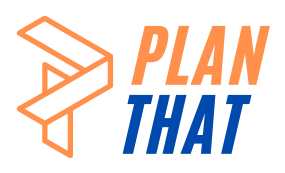Project managers and project teams are often faced with delivering a product within a timeline and with a certain amount of funding. The time to complete a project may be the deciding factor with many of the team’s decisions. The budget of the owner may determine what is worked on and how much attention can be placed on that particular request. Having a good project management strategy, however, can never be replaced. The following is an effective project strategy that may be implemented after the assessment of needs for the particular project:
- The project initiation,
- The project planning,
- The project execution.
The Project Initiation
The project initiation phase of any management team can involve a project proposal and the analysis of a business case. The case can be one that is similar to the tasks at hand. It should include a feasibility study, describing the jobs that should be done in order to complete the endeavor. The charter for the job should delineate any specifics that need to be addressed. The charter may include a checklist and, also, a required phase review form. Being accountable for each successful completion should be a critical requirement for any team.
Any initial reviews should allow for any problems that arise. These problems may include a scarcity of resources relating to assembling the initial project team. Locating the correct people is more difficult that can be imagined. The selection of the right team members may become even more difficult as a project is seen as difficult or longterm.
Coordinated leadership is essential. It may be that the project takes on too many leaders. When this happens, the project atmosphere may become disjointed, at the least. A lack of consensus regarding project objectives is not uncommon. There needs to be a clear plan about what the project is producing. Rapid prototyping is sometimes used to integrate a team, since a concrete concept may be easier to coordinate around.
Project Planning
Project planning may involve a resource and financial plan. A quality plan is essential, and this type description should, also, include a risk plan. How the project is accepted is critical, as well as a communications outline. The procurement and tender management of the project are essential for its successful completion. A statement or work may be used, as well as a request for information. The suppliers can send a proposal for the work to be completed. The supplier contract is, then, signed and delivered. A tender register may be in order. A phase review form for planning may make the organization of suppliers easier to keep up with.
The business analysis of any project will include the delineation of project constraints. Alternative solutions and related assumptions often are a part of a task completion. Weaknesses and strengths are defined within the risk identification. This phase will, also, include a stakeholder and customer analysis. These specifications should be top level in functioning.
The concept review is part of an initiation process analysis. At times there may be a need to meet with the team and certain external agencies. A review can provide a forum for information exchange. These types of meetings may be more effective by using a written question and answer session. The contents and structure of a meeting may be driven by the materials generated during the initial statement and analysis process.
Often the atmosphere during this phase is marked by indecision and hesitation. There may be indications of a project team frustration, and the desire of the staff to have the tasks move along. The actual solution may feel like it is never coming.
There may be indications of a management non-commitment. The ideas may feel unclear, and the teams can only provide rough estimates for how much is needed and how long the endeavor will last.
Project Execution
The project execution phase is often the third portion of a project life cycle. The actual building of the physical project is begun and delivered to the customer for signing. This phase of execution is frequently the longest phase in the life cycle. This time frame usually consumes the most energy and the most resources.
To enable and control the endeavor during this phase, a number of management tools can be implemented. These tools help to manage time and cost, as well as quality. Any changes and any risks involved should be assessed. Any issues that arise should be handled quickly and smoothly. These tools can, also, help to manage procurement and customer acceptance of the final product. Communications is frequently a deciding factor with customer satisfaction.
The performance of time management is even more important when there is a certain and imminent deadline. Cost containment is frequently a constraint, and this factor helps to limit certain overtime requests. Quality of performance and quality of product are critical. Without a quality product, the project may be rejected. Any changes that need to be made must be efficiently added or a bottom-line goal may not be reached for the project company. Risk management is essential, as well as any issues that may need immediate control. Procurement is important in order to successfully deliver the completed task. Acceptance of the project is frequently a requirement of a skilled management.
Communications is an element to any endeavor that should not be overlooked. Knowing what the customer needs is essential for any project to be seen as satisfactory. A phase review should be ongoing. Finding any errors as soon as possible is critical. Leaving errors to their own devices is not good management. More over, letting an error alone for any extended period of time could lead to further problems. These later problems are often very costly.
A Critical Eye On Any Project
Having a critical eye on any project is essential for its successful completion. Finding problems right away should allow for more free time to perform a superior job for the customer.
